Recently, the number of patients with pancreatitis is increasing. Doctors, nutritionists assure that in order to improve health, one should definitely adjust the diet. The question arises, what kind of diet for pancreatitis contributes to recovery? How to eat properly with this disease? Are there foods that can make things worse? What should you eat to improve your health?
Basic dietary rules for pancreatitis
Diet is mandatory for those who are sick with pancreatitis, otherwise no medicine will help.
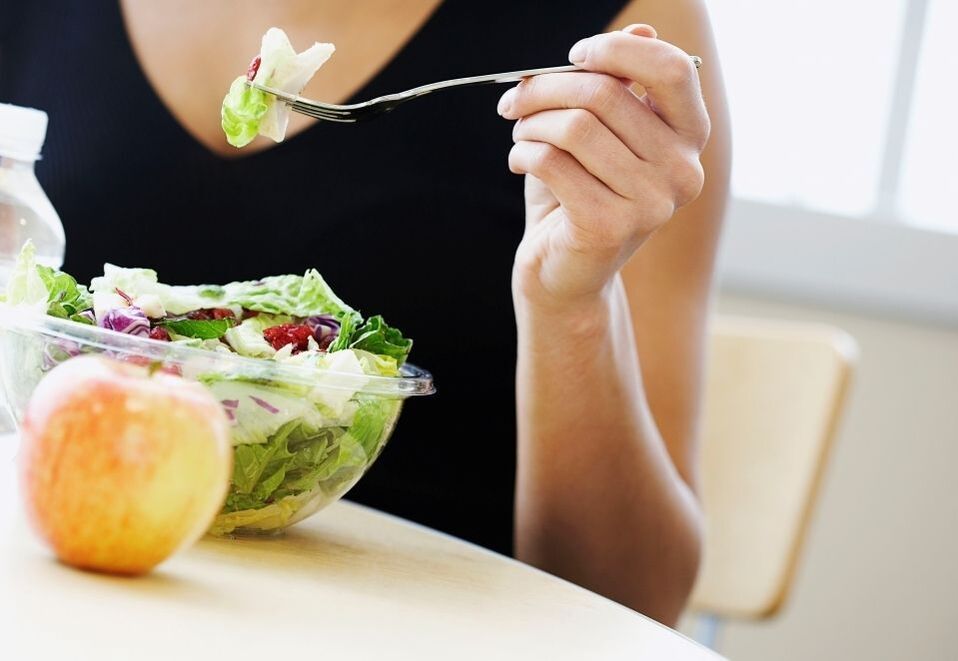
Experts have developed rules that must be followed:
- if the disease is acute, then the diet should begin with fasting, it lasts from 2 to 4 days;
- you need to eat often, at the same time;
- portions should be small;
- avoid overeating;
- reduce the amount of sweets;
- dishes should include pure products that do not cause irritation of the mucous membrane;
- the daily norm of fat is not more than 80 g;
- reduce the amount of salt to 10 g;
- reduce sugar intake to a minimum.
Based on these rules, the daily menu is formed.
How to eat with acute pancreatitis
Acute pancreatitis is a dangerous disease, so comprehensive measures are needed to improve the situation. Keep in mind that nutritional requirements are mandatory, otherwise this condition can lead to surgical intervention.
In the first stage of treatment, you need to fast for several days. The period of food rejection is from 2 to 4 days.
Only liquids are allowed. At this time, you can drink tea that is not strong, prepare decoctions from rose hips, suitable mineral water without gas.
The next step is diet number 5. Food has a low calorie content, salt and fat are prohibited, which can trigger new attacks. All dishes are cooked in liquid form. You can add a little.
It is best when compiling a menu to keep a list of useful and harmful products at the front of the chapter.
If you do not follow strict dietary rules, then the patient's condition will not improve.
How to eat with chronic pancreatitis
Nutrition in this disease should help normalize the function of the diseased organ. You should listen to the advice of Diet No. 5.
Diet tips for chronic pancreatitis:
- food and liquid entering the body should be warm;
- plan at least 5 meals during the day;
- avoid overeating;
- do not take long breaks between meals;
- reduce the amount of sugar;
- take out fresh bread.
All dishes prepared by frying are strictly prohibited.
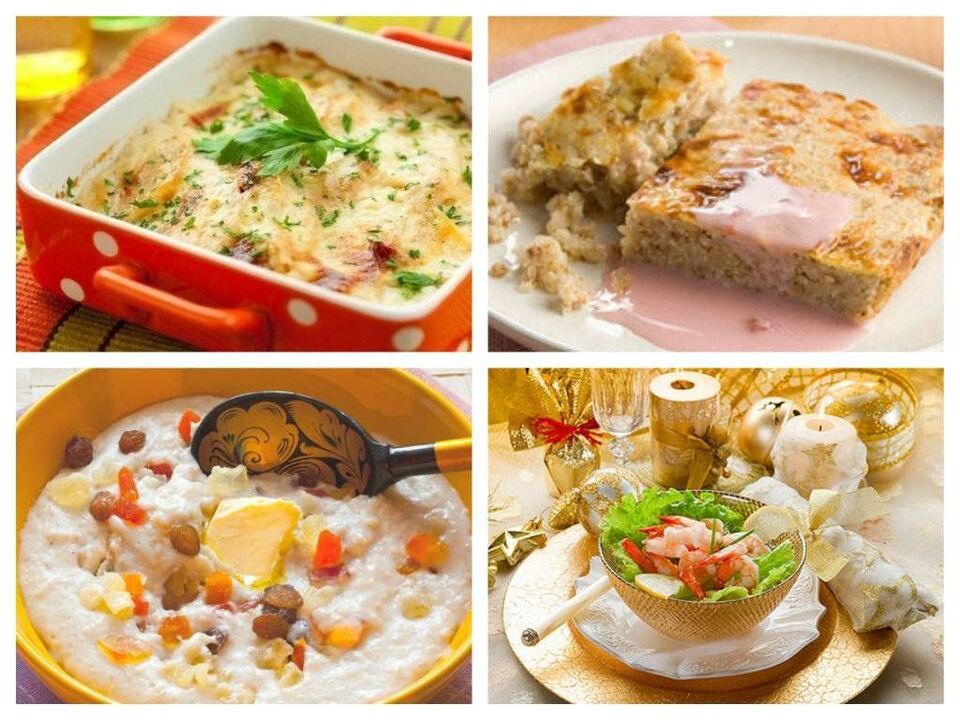
To form the right diet, you should know the list of products that will help you restore or worsen your health.
List of permitted and prohibited products:
- bakery products: crackers, overnight dry bread, cookies;
- porridge cooked in water with a little milk;
- meat, our steamed, in the oven, stewed chicken, turkey, lean beef;
- low-fat fish, mashed, chopped;
- first course: lean soup, vegetables, puree;
- dairy products: all non-acidic, non-fat can;
- vegetables: without coarse fiber;
- non-acid fruit;
- no more than 1 egg per day;
- butter no more than 30 g per day;
- vegetable oil no more than 2 tablespoons;
- non-acidic juices diluted with water;
- tea is not strong, maybe with lemon, milk;
- bakery products: fresh bread, muffins, puff pastry products;
- soup cooked in a strong broth;
- fatty meat;
- dairy products with a lot of fat;
- sauce;
- spices;
- fatty fish;
- fried egg;
- coarse fiber vegetables;
- mushrooms;
- legumes;
- carbonated drinks;
- alcohol;
- coffee;
- chocolate.
If you have questions, it is recommended to discuss the use of certain products with your doctor.
Diet for pancreatitis in children
Parents often have questions, what kind of diet for pancreatitis does a sick child need? The diet, which helps improve the baby's condition, is slightly different from the adult menu. But there are some peculiarities that need to be considered when feeding children.
Children's nutrition rules:
- give warm food and drink, eat more with chopped dishes, for example, mashed potatoes;
- the diet should contain all the components necessary for normal growth and development;
- even after the removal of acute conditions, it is important to adhere to dietary restrictions;
- forbid children from drinking carbonated drinks;
- fast food.
If the sick child is not yet 3 years old, then it is recommended to wipe the food, grind it. Any citrus fruit, freshly squeezed juice should be removed from the diet. Children should not be given berries with small seeds, rough shells. Fresh vegetables are not required.
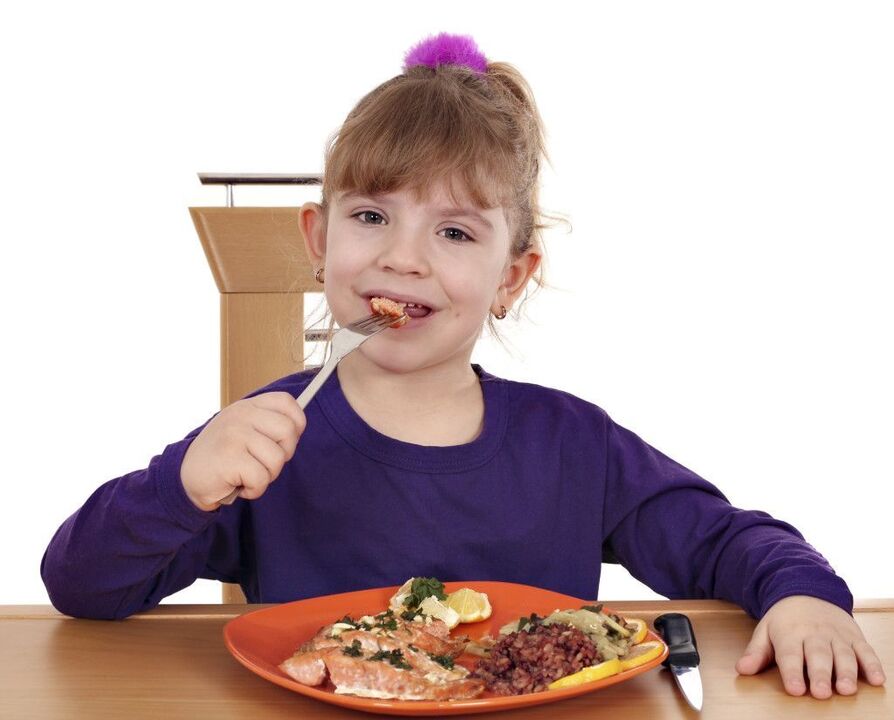
A child over 3 years old attends a children's educational institution, contact with peers. First of all, you need to take care of nutrition in school and kindergarten. To do this, talk to medical workers, inform teachers, educators.
The most difficult thing is to protect children from soda, chips and other harmful foods. When attending children's birthdays and parties, care should be taken so that the child does not violate the diet. The child needs to explain his need to restrict food.
Menu for 7 days for patients with chronic pancreatitis
For patients, it is recommended to make a menu in advance, this will allow you to eat balanced food, while the health condition will improve.
Menu options for this week:
1 day
- chicken meat, rosehip soup;
- oats, tea;
- pumpkin puree soup, steamed fish, jelly;
- jars of baby food;
- boiled zucchini, carrots, chicken fillet from the oven, juice;
2 days
- rice porridge, tea with honey;
- pumpkin puree, compote;
- vegetable soup puree, chicken meatballs, jelly;
- tea, crackers;
- semolina pudding and jelly;
3 days
- oatmeal, jelly;
- baked apple with cottage cheese, rosehip soup;
- soup puree from vegetables, steamed fish, compote;
- cottage cheese, tea;
- boiled fish, tea;
Day 4
- rice porridge, crackers, rosehip soup;
- pumpkin puree, tea;
- vegetable soup, a piece of boiled fish, mashed potatoes, compote;
- tea with honey, cookies;
- rice pudding, jelly;
Day 5
- oats, tea;
- cottage cheese, baked apple, rosehip soup;
- vegetable soup, chicken meatballs, compote;
- tea, dry biscuits;
- oven baked fish, rosehip soup.
Day 6
- semolina, tea;
- baked apple, rosehip soup;
- vegetable soup with a piece of beef, vegetable puree, compote;
- tea, crackers;
- steamed omelette, jelly;
Day 7
- rice porridge, crackers, rosehip soup;
- cottage cheese with chopped apples, tea;
- vegetable soup puree, chicken meatballs, jelly;
- cottage cheese, tea, cookies;
- semolina pudding, jelly.
Knowing the basic requirements for a meal, you can create your own menu.
Recipes for pancreatitis
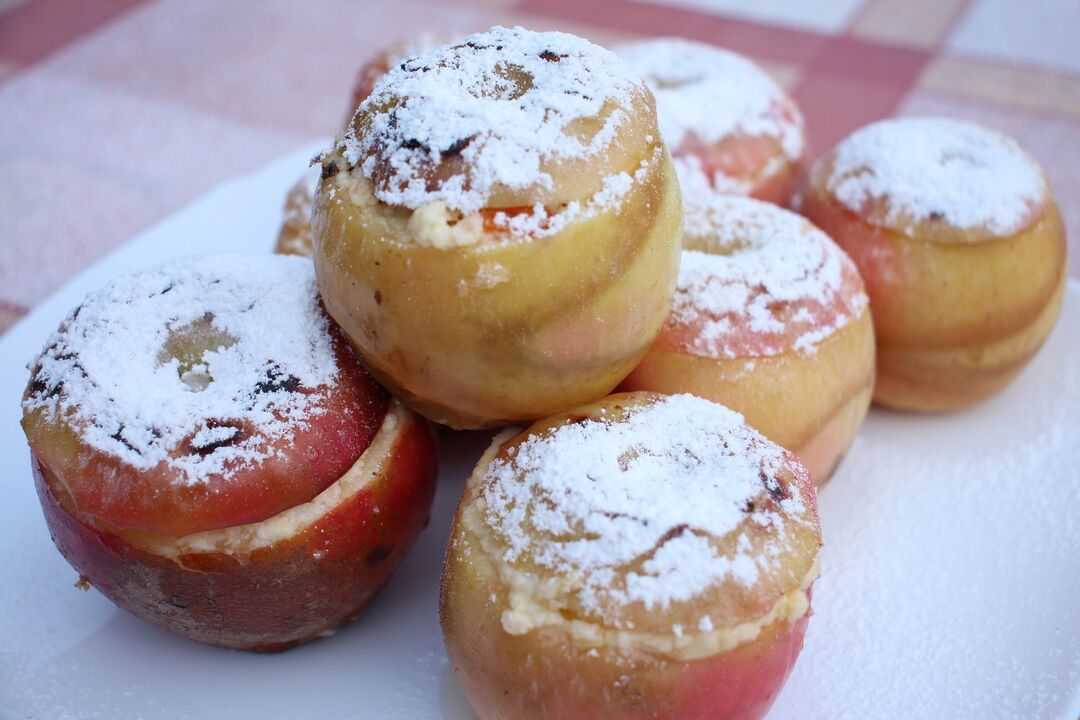
Knowing the basic rules of the diet, you can make changes to the menu. With food restrictions, you want to treat yourself to something delicious. Nutritionists have developed special dishes that can be eaten with pancreatitis.
Recipe for baked apples:
- In a washed apple, remove the core, being careful not to penetrate the bottom of the fruit.
- Add honey to an apple.
- Add cinnamon on top.
- Bake in the oven.
- Cool down.
Beet salad recipe:
- Boil 1 medium-sized beet, cool, cut with a grater.
- 2 sweet apples, peeled, cut into small cubes.
- Grind walnuts on a grater, you need about a spoon.
- Combine all components, mix, salt a little.
- Fill with olive oil.
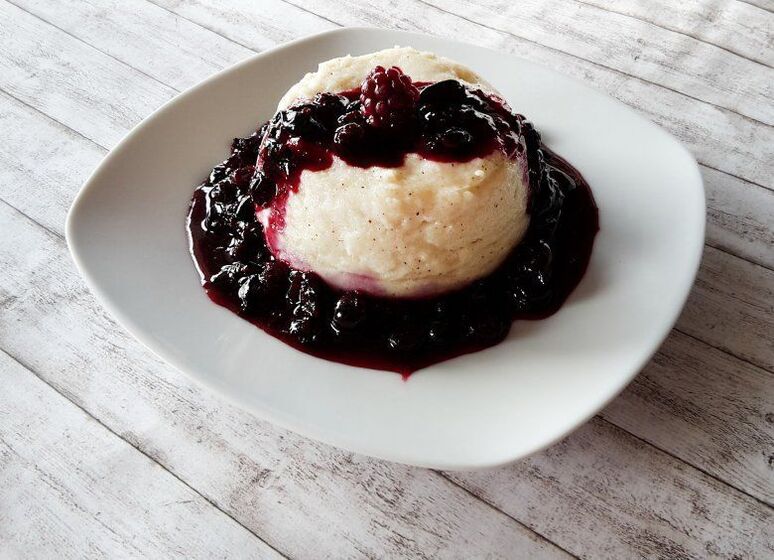
Recipe for semolina pudding with berry jelly:
- Prepare a thick semolina porridge in water, pour it into a deep mold, let it cool.
- Pour strawberries with a little water, boil, remove, cut, put back into the soup.
- Pour sugar, heat until boiling.
- Prepare the starch, stir in cold water, carefully pour into the strawberry soup, boil, do not allow to boil. Remove from heat, cool.
- When serving, cut the thick semolina pudding, pour the jelly on top.
If desired, any diet can be supplemented with delicious healthy dishes.
We recommend a video about permitted and prohibited foods for pancreatitis:
Pancreatitis is a common disease that requires a strict diet to treat. To do this, you need to know which foods can be eaten and which cannot. You should follow the rules of cooking, general recommendations on nutrition.
Types of pancreatitis
The most common classification of pancreatitis is based on the nature of the course of the disease: acute attacks or prolonged chronic pancreatitis with periodic relapses. The two forms differ in the severity of symptoms and require different treatment approaches.
Acute pancreatitis
The inflammatory process in acute pancreatitis develops very quickly and is always accompanied by severe pain. In most cases, this disease occurs on the background of alcohol abuse or after eating a large amount of fatty food. Sometimes an exacerbation is preceded by an attack of acute hepatic colic.
Symptoms of acute pancreatitis:
- Severe pain in the left hypochondrium, radiating to other organs. Pain attacks last about half an hour to an hour. The pain is very strong when lying on the back. Attacks worsen after eating, especially fried and spicy, and any alcoholic beverages.
- Vomiting, often violent, bilious and bitter. Persistent nausea that does not go away after vomiting.
- Subfebrile or high temperature.
- Sometimes, due to a violation of the outflow of bile, the yellowness of the eye protein is observed, very rarely - the yellow color of the skin.
- In some cases, the pain syndrome is accompanied by heartburn and bloating.
An attack of acute pancreatitis requires immediate medical attention. Painkillers only bring temporary relief, but do not affect the cause of inflammation. In the absence of qualified help, the risk of severe complications increases rapidly: infection of the inflamed tissue, necrosis and abscess.
Acute pancreatitis in severe stages can cause shock and failure of multiple organs.
Chronic pancreatitis
If, after an attack of acute pancreatitis, a person does not follow the doctor's recommendations and continues to drink alcohol and eat unhealthy food, the disease is most likely to become chronic. Chronic pancreatitis develops with the nature of significant damage to the pancreas during the first episode of the disease.
This disease is characterized by gradual pathological changes in the structure of pancreatic cells. Over time, it begins to lose its main function - the production of enzymes necessary for the digestion of food. Exocrine deficiency manifests itself:
- diarrhea
- bloated stomach,
- changes in the nature of feces - they acquire a sticky consistency due to the large amount of fat in them and are less cleaned from the walls of the toilet bowl.
Chronic pancreatitis can be asymptomatic for a long time: acute pain appears when significant pathological changes have occurred in the pancreas. During an attack, chronic pancreatitis is manifested by the same symptoms as acute:
- severe back pain,
- nausea,
- vomiting,
- intestinal disorders.
Diagnosis is based on ultrasound, computed tomography or magnetic resonance imaging. During the study, a narrow pancreatic duct is usually found due to the formation of stones in it - calcification. Hardware techniques also make it possible to detect cysts at the site of atrophic tissue. Laboratory blood tests for chronic pancreatitis are not very informative.
Pancreatic dysfunction is determined by stool analysis. If it contains a certain enzyme - pancreatic elastase - a diagnosis of "chronic pancreatitis" is made.
The importance of enzymes in digestion
The functions of the human body are provided by a complex system of interconnected and interdependent biochemical reactions. Thanks to special protein compounds - enzymes or enzymes - all these reactions are accelerated, providing a fast metabolism. The action of enzymes is highly selective: each of them can start, speed up or slow down only one reaction.
Digestion is based on the work of digestive enzymes. Their main task is to make the energy assimilation process fast and efficient. Enzymes break down food components (proteins, fats and carbohydrates) into substances that can be absorbed. At the same time, the amount of enzymes produced depends on the quantity and quality of food eaten.
Digestion of food begins in the mouth. Food broken down by the teeth into small pieces is mixed with saliva, which contains the enzyme alpha-amylase. The better we chew food, the easier it is for salivary gland enzymes to convert starch molecules into soluble sugars and facilitate further processing.
After initial processing, food enters the stomach through the esophagus, where the gastric enzymes pepsin and hydrochloric acid begin to work. These substances produce gastric juice, which:
- provides antibacterial protection of the body;
- stimulates pancreatic hormone production;
- regulates gastric motility;
- break down fat and perform several other functions.
In addition to pepsin, which is responsible for the breakdown of large protein molecules, other enzymes are also produced in the stomach, for example:
- gelatinase - a solvent for collagen, gelatin and other connective tissue proteins;
- lipase - an enzyme that breaks down certain fat molecules into fatty acids and monoglycerides;
- chymosin - starts the process of digesting milk proteins.
Bile plays an important role in the digestive process. It contains bile acids that stimulate the production of pancreatic secretions.
From the stomach, the bolus of food is transferred to the duodenum, where the main process of food digestion takes place. It is prepared by more than 20 pancreatic enzymes. Enzymes are contained in pancreatic juice, which is produced by the gland in an amount of about two liters per day.
Functions of pancreatic enzymes:
- protease - breakdown of proteins into amino acids;
- nuclease - acts on DNA nucleic acid;
- amylase - breaks down starch into simple sugars;
- lipase - breaks down fat into higher fatty acids and glycerol.
Violating the function of enzyme production by organs of the digestive system, especially the pancreas, the whole organism is out of balance. This imbalance leads to nausea, diarrhea, bloating, followed by anemia and malnutrition.
What to take with food with pancreatic enzyme deficiency
With pancreatitis, the process of production of digestive enzymes by the pancreas is interrupted, as a result of which a person experiences discomfort and pain in the stomach. In this case, after a complete examination, replacement therapy can be prescribed.
The task of treatment with enzyme preparations is to compensate for their deficiency in the body, while reducing the load on damaged organs. In some cases, such therapy is prescribed for life.
Important!The action of all enzyme preparations begins 20-30 minutes after eating, so you need to drink them strictly before eating in the dose prescribed by your doctor!
Modern pharmacology offers a large number of different enzyme preparations from animals and plants. Some of them are only intended to fill the deficiency of a single enzyme, for example, breaking down lactose or fat. There are also ways of complex effects, prescribed for the deficiency of several enzymes in various organs of the digestive system.
Pancreatic enzymes are obtained from the organs of cows or pigs. The composition of the drug includes the main pancreatic enzymes - amylase, lipase and trypsin. In addition to pure pancreatin, polyenzymatic preparations may include bile acids, adsorbents or other enzymes. All drugs are selected strictly individually, taking into account the course of the disease and the severity of the symptoms.
What is a diet for pancreatitis?
In the process of treating pancreatitis, nutrition plays a role no less than drugs. The main goal of the prescribed diet is to restore pancreatic function and normalize the production of digestive enzymes.
Foods that are difficult to process increase the load on inflamed organs. After a large feast with fried fatty foods, the pancreas begins to intensively produce enzymes for digestion. If the duct of the gland is narrowed, the pancreatic juice produced in an extreme mode accumulates in the gland, worsening the development of the disease - the affected pancreas begins to digest itself.
Signs that your glands are overworked include:
- heaviness in the stomach after eating,
- heartburn,
- belch
- stomach pain attack.
Of course, sticking to a strict diet all the time is not easy, especially at home. People with severe dietary restrictions have to cook for themselves and resist the temptation to eat anything fried or spicy.
It is important to understand that one violation of the diet can cause an acute attack of pancreatitis with all the following consequences: severe pain, nausea, vomiting and diarrhea. A single failure can negate all efforts to maintain long-term remission.
Diet rule number 5: what you can and cannot eat with pancreatitis
A diet for pancreatitis has many restrictions on allowed foods and how to prepare them. Especially for people with problems with the pancreas, one of the founders of domestic dietetics and gastroenterology, Professor I. I. Pevzner developed the nutrition table number 5.
But, before familiarizing yourself with the specific provisions of this diet, it is necessary to take into account the general principles of nutrition for pancreatitis:
- you need to eat 5 times a day in small portions;
- excluding fried and pickled foods;
- in the acute stage of the disease, food must be crushed or wiped;
- animal protein should dominate in the diet;
- the amount of fat per day should not exceed 50 g;
- sugar is also under strict restrictions - no more than 30 g per day;
- products that increase flatulence are prohibited - sweet carbonated drinks, any legumes, sweet apples and grapes, sweet muffins and some others;
- salt intake is minimized - no more than three to five grams.
Important!With pancreatitis, you can eat carbohydrates slowly, while you need to monitor the ratio of nutrients in the meal. Do not be fooled by the fact that sugar can be replaced with honey, its intake should also be controlled. At first, you will definitely need a calculator. It is necessary to immediately calculate the daily calorie intake and the balance of protein, fat and carbohydrates based on the body mass index. This information is easily available on the Internet on websites dedicated to proper nutrition and a healthy lifestyle. There are various mobile apps for calculating calories and nutrients.
All these principles are taken into account in diet number 5, which exists in basic and advanced versions.
The basic option is indicated for the relapse of chronic pancreatitis and for the acute nature of the disease. In the acute phase, the diet is stricter with many restrictions. It aims to unload the pancreas and relieve the symptoms of acute inflammation. In the first 3 days of the acute stage, fasting is recommended for the patient to rest the pancreas. Further, within 3-7 days, carbohydrate foods are allowed in small portions at short intervals. The caloric content of today's diet should be reduced, and food should only be consumed in pureed or semi-liquid form.
Important!It is widely believed that rich soups, especially chicken soups, help well with any digestive problems. With pancreatitis, gallbladder disease and other pathologies of the gastrointestinal tract, fat-rich soups are absolutely contraindicated! An excessive amount of animal fat significantly increases the load on the pancreas and prevents the normalization of the condition.
The diet includes grains on water and vegetable soups with various grains, except for grains and corn, boiled or steamed pure vegetables. From drinks, weak tea, jelly, dried fruit compote are allowed. Bread is only allowed to be white and slightly dry, you can eat crackers and biscuits like biscuits.
On the third day of the carbohydrate diet, protein products are gradually introduced:
- soup from lean meat, it is desirable to cook soup from beef, turkey or chicken breast, the meat from the soup should be passed through a meat grinder or chopped in a blender;
- steamed omelette or boiled egg;
- cut steam from lean meat or low-fat fish;
- cottage cheese casserole and soufflé from cottage cheese with minimal fat content.
Diet number 5 is recognized as saving the pancreas as much as possible, which requires complete rest in the acute stage. Allowed and prohibited foods for the basic diet are shown in Table 1.
Important!The dominance of protein foods in the diet can cause constipation. In this case, you need to add more raw vegetables and fruits from the allowed list. With gout, preference is given to protein of plant origin or sea fish.
Can chronic pancreatitis be cured?
So far, no drug has been developed to stop and reverse the process that occurs in the pancreas during chronic inflammation. Therefore, treatment aims to slow the progression of the disease and prevent exacerbation. At a later stage, when there is a significant decrease in pancreatic function, therapy is supplemented with agents to normalize digestion and blood sugar levels. To achieve remission of chronic pancreatitis, proton pump inhibitors, antispasmodics, painkillers, enzyme preparations are used, their choice is individual and depends on the clinical picture of the disease.
An important area of prevention is the timely treatment of diseases that lead to the development of chronic pancreatitis.
How to eat with chronic pancreatitis?
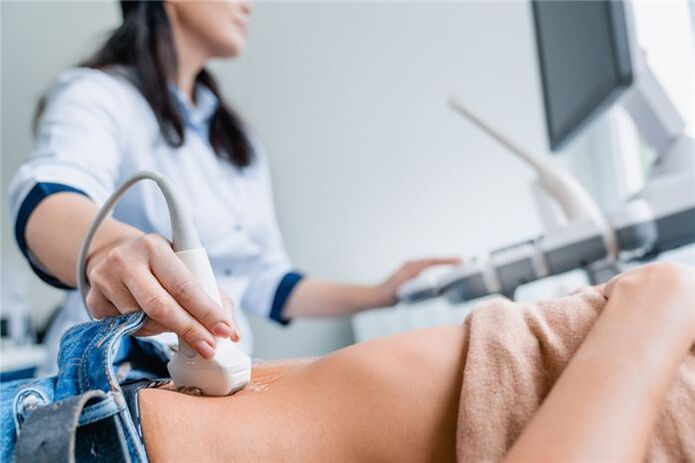
Adherence to a therapeutic diet is an effective and scientifically proven remedy to prevent seizures. There are several therapeutic diet modifications for exacerbation and remission stages. The diet used is based on the exclusion of products that stimulate an increase in the secretion of the stomach and pancreas. Rest for the pancreas is very important to reduce inflammatory activity. In the acute stage, the powdered version of the diet is used, and when entering remission, the non-pulverized version is used.
In chronic pancreatitis, it is important to provide the body with a sufficient amount of protein; 110-120 g of protein per day is included in the diet, which slightly exceeds the physiological norm. At the same time, 60% of this amount must be animal protein. The menu includes dishes from lean meat, poultry, fish, cottage cheese and egg whites. But fats and simple carbohydrates, on the other hand, limit.
Nutrition in chronic pancreatitis should be regular and fractional - 5-6 times a day in small portions. More about nutrition for pancreatitis






























